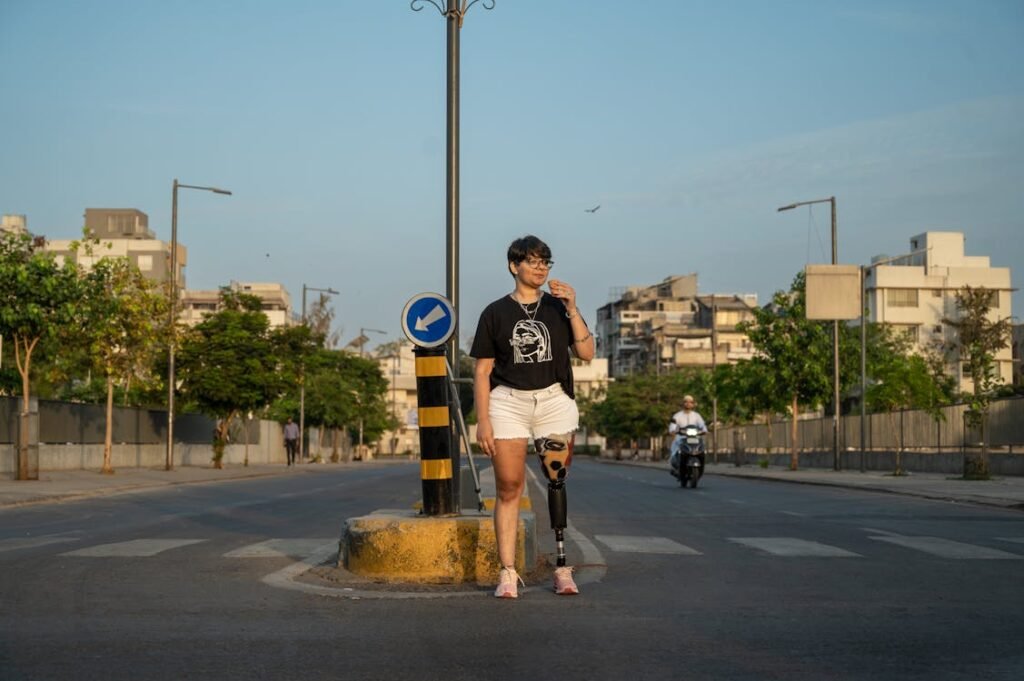Walking is something most of us take for granted. But for someone using a prosthetic limb, every step is a conscious effort. When a prosthesis fits just right, it moves naturally with the body. But when the fit is off, even by a small amount, walking becomes harder, slower, and more tiring.
Fitment doesn’t just affect how a prosthesis feels—it deeply impacts how much energy the body uses and how fast a person can move. A poor fit can turn simple movements into exhausting tasks. On the other hand, a good fit can help someone walk farther, faster, and with less strain.
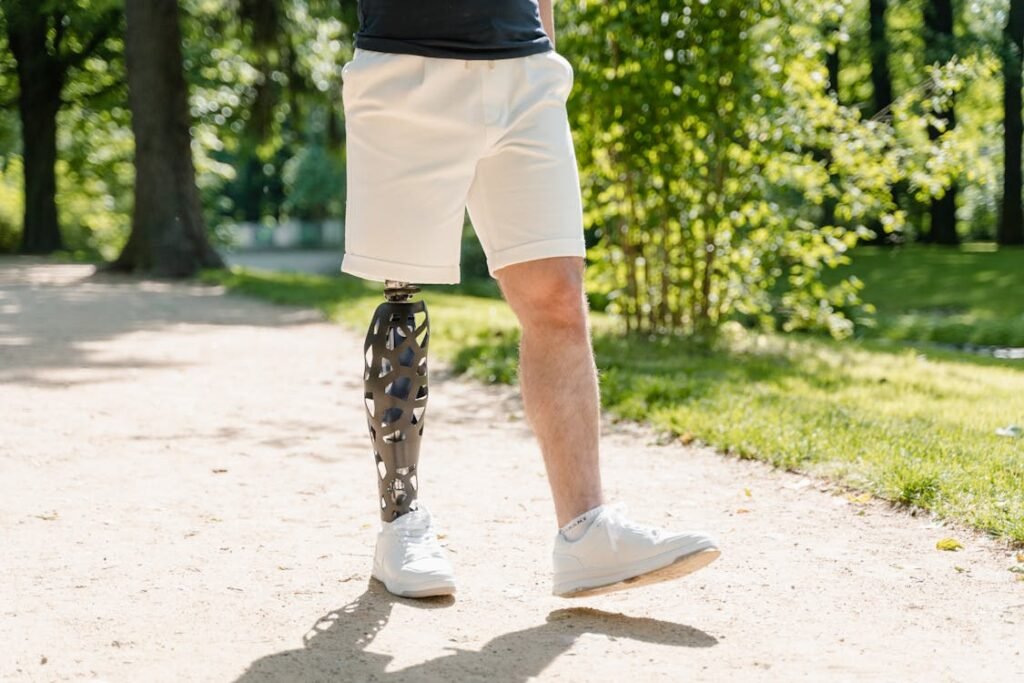
How the Body Uses Energy While Walking
Walking Is More Than Just Moving Your Legs
At first glance, walking seems like a simple activity. You move one foot in front of the other, shift your weight, and repeat. But in reality, it’s a complex coordination of muscles, joints, and balance.
The body works hard to keep you stable, control your motion, and manage impact as you move forward. Every step burns energy—not just in the legs, but throughout the entire body.
For people with both natural legs, walking takes a certain amount of energy that the body is used to. But for people using a prosthetic limb, the effort can be much greater.
That’s because the prosthesis doesn’t always match the exact shape, movement, or rhythm of the natural limb. And when that fit isn’t just right, the body needs to work even harder to make up for the difference.
The Role of Fitment in Energy Efficiency
Energy efficiency, in simple terms, means doing more with less. In walking, it’s about using the smallest amount of effort to cover the greatest distance.
For someone using a prosthetic limb, the fit of the socket—the part that connects the device to the body—plays a huge role in how energy-efficient their walking becomes.
If the socket is too loose, the limb might move inside it. That creates extra friction and forces the muscles to work harder to stay balanced.
If the socket is too tight, it can limit movement or cause pain, which also leads to an awkward walking pattern. Either way, poor fit means the body uses more energy with every step.
Good fitment allows for a smoother, more natural stride. The energy that would have been lost in adjusting or compensating is saved. That means less fatigue, more distance covered, and a walking experience that feels closer to normal.
Why the Right Alignment Matters
Fit isn’t just about tightness or comfort. It’s also about alignment—how the prosthetic limb lines up with the rest of the body.
If a limb is not properly aligned, the user may lean too far to one side or swing their leg out to avoid pressure. These movements take extra energy and can lead to pain in the hips, back, or shoulders over time.
A well-aligned prosthesis distributes weight evenly and supports a more upright posture. This helps keep the body in balance, making it easier to walk naturally.
It also allows the prosthetic foot to land properly with each step, reducing strain and energy loss.
Proper alignment is something that often needs fine-tuning. Even small changes in muscle tone, body weight, or activity level can affect how the prosthesis fits.
That’s why regular checkups and adjustments are so important, especially if you notice your energy levels dropping more quickly than usual.
Muscle Use and Fatigue with Improper Fit
People who use poorly fitted prosthetic limbs often report feeling tired much sooner than those with properly fitted devices. This is because the muscles in the residual limb, as well as the rest of the body, have to overcompensate.
The user may end up lifting the leg higher than needed or twisting the body to reduce pressure.
These small changes might not be noticeable at first, but they add up. Over time, they place extra demand on the muscles and joints, increasing the risk of fatigue and injury. Walking becomes a chore instead of a natural, fluid movement.
By contrast, when the prosthesis fits well, movement becomes easier and smoother. The muscles don’t need to overwork, which keeps energy use lower.
This leads to longer walking times, less soreness, and better overall function.
Walking Rhythm and Natural Gait
A comfortable fit also supports a more even rhythm when walking. If one step is longer or faster than the other, the body has to keep adjusting. This uneven rhythm is not only tiring but can also affect balance and coordination.
When the fit is right, the rhythm of each step becomes smoother and more predictable. The body doesn’t need to guess what’s coming next. That reduces energy spikes and allows for a more relaxed walking experience.
This is especially important for people who are active, whether that’s walking around the house or taking longer walks outdoors.
A smoother gait makes all movement easier and more efficient, which improves confidence and reduces the fear of falling or tripping.
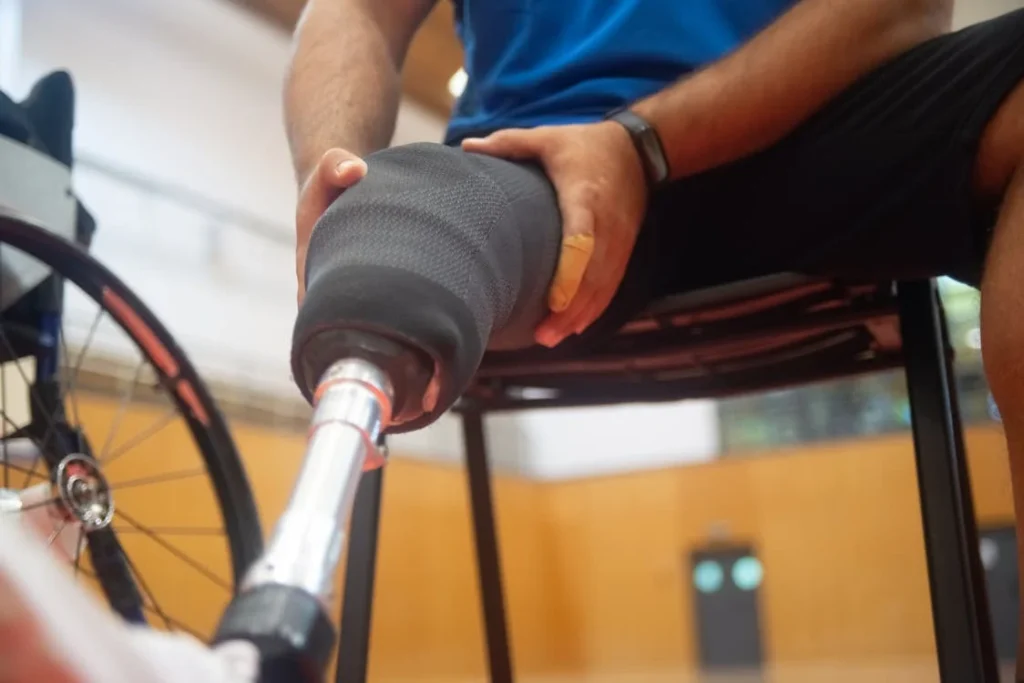
The Link Between Fitment and Walking Speed
Why Speed Matters More Than You Think
Walking speed isn’t just about how fast you get from one place to another. It’s a sign of how well your body is working. In fact, healthcare professionals often use walking speed as a simple test to check strength, balance, and overall health.
When someone walks slowly with a prosthesis, it often means there’s something wrong with the way their limb fits or functions.
Faster walking usually means the user feels confident, stable, and pain-free. It suggests that their body is working in sync with the prosthetic, not fighting against it.
But if the fit is poor—whether the socket pinches, shifts, or causes discomfort—people slow down naturally. That’s not just to avoid pain. It’s the body’s way of protecting itself from strain or injury.
Poor Fit Slows You Down
When the prosthesis doesn’t fit right, walking feels awkward. Each step might feel uneven or unpredictable. The user may be unsure if their foot will land where they want it to.
This uncertainty causes them to slow down and watch every step carefully.
Slower walking isn’t just about caution. It’s also about stability. If the limb feels unstable or uncomfortable, the user may shorten their steps or hesitate between movements.
These breaks in rhythm make walking feel clunky and tiring. What should be a smooth, flowing motion becomes stop-and-go, which demands more from the body.
This is often seen in new users or in those who’ve had their prosthetic for a long time but haven’t had it adjusted recently.
As the shape of the residual limb changes, the original socket may no longer be a good match, leading to these slow, effortful walking patterns.
A Better Fit Supports Natural Speed
When the socket hugs the limb just right, it acts like a true extension of the body. There’s no need to pause and adjust. Movements become more fluid. The user can walk at a pace that feels natural, without second-guessing their steps.
This kind of seamless movement saves time and energy. The more natural the gait, the less mental effort goes into thinking about every step. It’s like riding a well-tuned bicycle versus one with loose parts. When everything is working together, you don’t need to push as hard to go farther.
Even small improvements in fit can lead to noticeable boosts in walking speed. For example, trimming the edge of a liner to remove pressure from a sensitive spot or changing the socket shape to reduce rubbing can restore a smoother stride and help someone feel more confident outdoors.
Confidence and Stride Length
Speed is closely tied to confidence. When users trust their prosthetic limb, they take longer, more even steps. They look ahead instead of down.
They walk like they used to before the amputation—or as close as possible. But when there’s discomfort or uncertainty, every step becomes shorter and more cautious.
Stride length, or how far you step with each leg, also affects speed. Poor fit can limit how far you feel safe stepping, especially if the prosthesis feels heavy, loose, or unstable.
With a better fit, stride length increases. That’s not just good for speed—it’s also healthier for joints, posture, and muscle balance.
Over time, better stride leads to better habits. The body adjusts to a stronger, smoother rhythm, and walking feels less like a task and more like a part of normal life again.
Long-Term Effects of Slow Walking
Walking slowly because of discomfort can affect more than just daily activities. Over time, it changes the way the body moves.
Other joints, like the hips and lower back, start to take on extra strain. This can lead to soreness, joint wear, and reduced mobility.
In older users, slower walking speeds can also increase the risk of falls. Poor fitment creates a cycle of discomfort, hesitation, and imbalance, which may lead to reduced activity levels. This, in turn, affects health and independence.
Fixing the fit not only helps users walk faster—it helps them stay active, strong, and involved in their communities.

Real-World Challenges That Affect Fitment and Performance
Why Fit Changes Over Time
Even a perfectly designed prosthesis doesn’t fit forever. The human body is always changing. Weight shifts, muscle tone evolves, and scar tissue may develop or fade.
As these changes happen, the socket—the part of the prosthesis that touches the limb—might not match your body as well as it once did.
When the socket doesn’t follow the shape of the limb closely, you’ll start to feel the difference. Some people describe it as wobbling, others as pressure building in one area or slipping in another.
This can slowly affect how you walk. You might not notice it all at once, but over weeks or months, your walking becomes less smooth, more tiring, and less efficient.
Sometimes these issues are caused by daily changes. For example, many people experience slight swelling in the limb during hot weather or after long activity. These small shifts might make your prosthesis feel tight in the afternoon, even if it was fine in the morning.
If this happens often, you may need a more flexible socket design that can handle these daily differences without affecting your movement.
Environmental Conditions Play a Role
The world outside your home also affects how your prosthesis feels and how well you can walk. Hot weather makes skin sweat, which can lead to rubbing and slipping inside the socket.
Humidity can cause liners to bunch up or feel sticky. On rainy days, slippery ground might make you walk more carefully, putting pressure on different joints.
In colder weather, some people experience stiffness in their muscles, which changes how they step. These seasonal changes aren’t always huge, but they influence how comfortable your fit is—and how much effort it takes to move normally.
The type of terrain matters too. Walking on flat, smooth surfaces is much easier than going up hills, over gravel, or across uneven sidewalks.
If your prosthesis isn’t well-aligned, these small challenges start to slow you down or wear you out quickly.
Prosthetic users who are active outdoors need to make sure their fit supports a wide range of conditions, not just indoor walking.
A good prosthetist will take this into account and suggest features or materials that help with comfort in all kinds of environments.
Poor Fit Can Affect Emotional Health
When you’re constantly aware of discomfort or struggling to move easily, it starts to affect how you feel about yourself. You may avoid going out or socializing.
You may hesitate to join activities, even ones you used to enjoy. Over time, that can impact your confidence, your relationships, and your mental well-being.
Walking is more than just getting from place to place. It’s about independence. It’s about freedom. When that’s taken away by pain or poor mobility, people often feel like they’re losing a part of themselves.
The good news is that even small improvements in fitment can bring those feelings back. When walking becomes easier and smoother, it becomes less of a struggle.
Confidence returns. You start to feel more like yourself again. That’s why good fitment isn’t just a physical issue—it’s a deeply personal one.
Regular Adjustments Make All the Difference
Many prosthetic users wait too long to ask for changes. They think discomfort is part of the process or assume that things will get better on their own. But waiting can make things worse. A poor fit can lead to bad walking habits, skin problems, and even joint damage.
The truth is, regular check-ups with your prosthetist are the best way to keep your energy levels high and your walking speed strong. Your limb might change slowly, but over time, those changes add up. Making small adjustments every few months can help keep your prosthesis working as smoothly as the day you got it.
It’s not just about the socket, either. Sometimes the liner needs replacing, or the alignment needs tweaking. Sometimes it’s a matter of adding a cushion or changing the angle of the foot. Each change is small, but together, they can make walking easier, faster, and far less tiring.

Customization and Technology in Fitment
Personal Fit Is Not a Luxury—It’s a Necessity
No two limbs are the same. That’s why prosthetic fit should never be one-size-fits-all. Customization is what makes the difference between a limb that’s tolerable and one that’s truly life-changing. A personalized fit gives users more freedom of movement, better posture, and far less fatigue during everyday tasks.
For a prosthesis to truly work with your body, every detail must be tailored to your shape, your lifestyle, and your goals. This doesn’t just include the socket—it includes the liner, suspension system, and even the angle of the prosthetic foot. When these pieces are designed with precision, walking becomes easier and far more efficient.
The goal isn’t perfection—it’s balance. A prosthesis should support your body so you don’t have to fight against it. And when you get that balance just right, everything improves: walking speed, energy use, confidence, and quality of life.
The Role of 3D Scanning and Digital Tools
Modern technology has made prosthetic fitment faster, more accurate, and more adaptable. Tools like 3D scanning allow prosthetists to capture the exact shape of a residual limb without the need for messy molds.
These scans can then be used to design a socket that follows the body’s curves and contours with millimeter precision.
Digital design also allows for faster adjustments. If a user reports discomfort or reduced performance, changes can be made in the software, tested with simulations, and then produced using advanced 3D printing or CNC techniques. This means quicker turnaround times, fewer appointments, and a better experience for the user.
At Robobionics, we’ve seen firsthand how these tools help users walk more naturally and stay more active. Technology can’t replace human care—but it can make that care smarter and more precise.
Smart Materials That Adapt with You
Fit is not just about shape—it’s about how the materials respond to the body. Traditional sockets made from hard plastics don’t always adapt well to daily changes like swelling or movement. Newer materials, like thermoplastic elastomers or silicone blends, offer more flexibility and comfort.
Some liners are now designed to wick away sweat, reduce skin irritation, and even adjust to your body temperature. These features are especially useful in hot climates, where maintaining comfort can be a daily challenge.
Other systems use soft inner layers that mold gently to the limb while keeping a firm outer structure. This “dual-layer” approach helps manage pressure better and prevents movement inside the socket. As a result, walking becomes smoother and more stable.
Choosing the right materials is a joint decision between the user and the prosthetist. The best material for one person might not be right for another.
But with today’s technology, it’s easier than ever to find something that feels right and performs well.
Adaptive Components for Better Walking Speed
Another major improvement in prosthetic design is the rise of adaptive components. Feet with energy-return systems can store and release energy with each step, giving users a small but important boost in walking speed.
Ankles that adjust automatically to different surfaces help maintain balance and reduce muscle fatigue.
These features are especially useful when the socket fit is optimized. A high-tech foot won’t help much if the socket causes discomfort. But when the fit is right, these systems enhance every step, making movement smoother and more efficient.
Some components are even smart enough to learn your walking pattern and adapt to it. These microprocessor-controlled systems are more common in advanced leg prostheses, and they allow for natural walking at different speeds, on various surfaces, and even on stairs.
While these advanced systems may not be for everyone, they show just how much is possible when the fit is right. A well-fitted prosthesis can unlock the full potential of today’s prosthetic technology, helping users walk faster, longer, and with less effort.
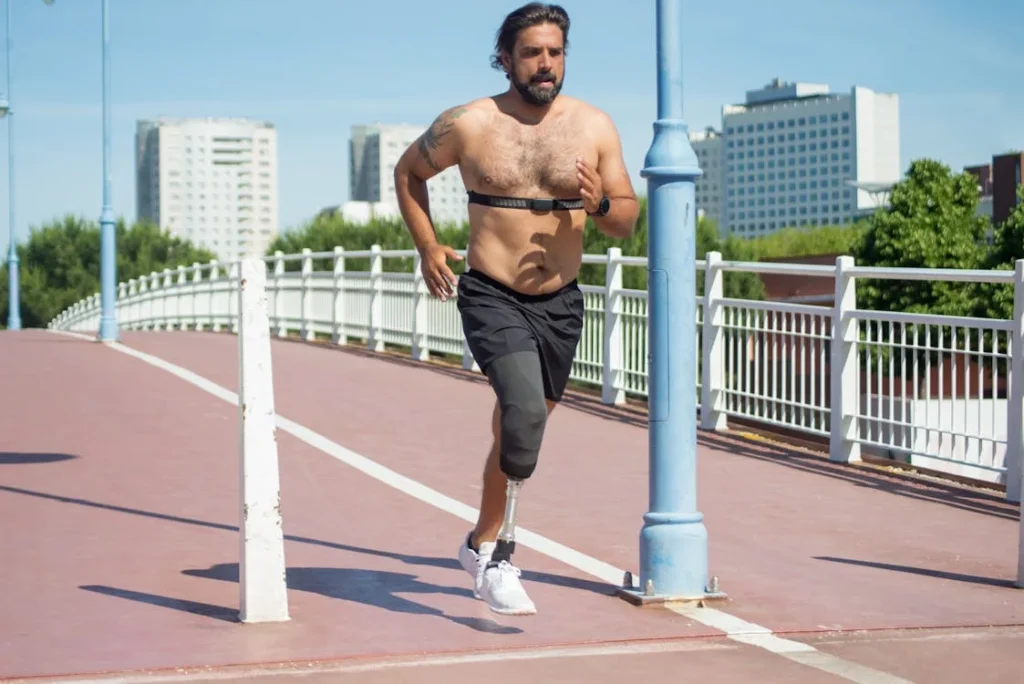
Making Comfort, Speed, and Energy Efficiency a Daily Reality
Fitment Is the Foundation of Freedom
Every step taken with a prosthetic limb is a combination of balance, strength, and trust—trust that the device will work with the body, not against it. And that trust begins with fitment.
When the fit is poor, every step becomes a reminder of what’s missing. When the fit is just right, the prosthetic becomes an extension of the body, something the user doesn’t have to think about.
That’s the real goal: to make walking feel natural again. When that happens, everything else improves—walking speed increases, the body uses less energy, posture gets better, and confidence returns. What was once tiring becomes manageable. What once felt slow becomes steady and strong.
Fitment isn’t about chasing perfection. It’s about supporting the body in a way that feels smooth and dependable. It’s about making sure every step is worth less effort and brings more freedom.
Daily Habits That Keep Fitment Working
Even the best-fit prosthesis needs care. Regular cleaning of the limb and liner prevents irritation. Paying attention to how your body feels each day helps you catch small issues before they become big problems.
Staying hydrated, getting enough rest, and wearing breathable clothes also help reduce swelling and improve comfort.
Your prosthetic needs maintenance, too. Liners wear out. Suspension systems loosen. Alignment can shift with time and use. These changes happen gradually, but they affect everything—from energy use to the way you walk across a room. Keeping up with regular prosthetic check-ups keeps everything in top shape.
When you feel something’s off, don’t wait. Whether it’s a sore spot, a shift in balance, or just walking more slowly than usual, it’s worth looking into. Often, a simple adjustment or small upgrade makes a huge difference.
Partnering With the Right Experts
A skilled prosthetist does more than build devices. They listen. They understand your daily challenges. They make changes not just based on numbers or measurements, but on how you move, what you feel, and what your goals are. That partnership makes all the difference.
Fitment is never a one-time task. It’s a process that requires attention, feedback, and trust. A good prosthetist will always encourage you to speak up, ask questions, and return for adjustments—not just when something hurts, but when something feels different.
At Robobionics, we believe the right fit changes lives. Our approach combines advanced design, modern materials, and most importantly, personalized care. We understand that every user is unique, and so is their path to comfort and mobility.
Looking Forward With Confidence
Improved fitment leads to more than just faster walking. It leads to deeper independence. When energy is saved with every step, that energy can be used elsewhere—towards hobbies, work, travel, or time with loved ones.
When speed improves, so does confidence. You start to trust your body again. You stop planning your day around how far you can walk. Instead, you start planning around where you want to go.
That’s the real impact of proper fitment. It helps you do more, go farther, and feel better doing it.
You don’t need to settle for slow walking, daily discomfort, or early fatigue. You deserve a prosthetic that keeps up with your life—not one that slows you down.
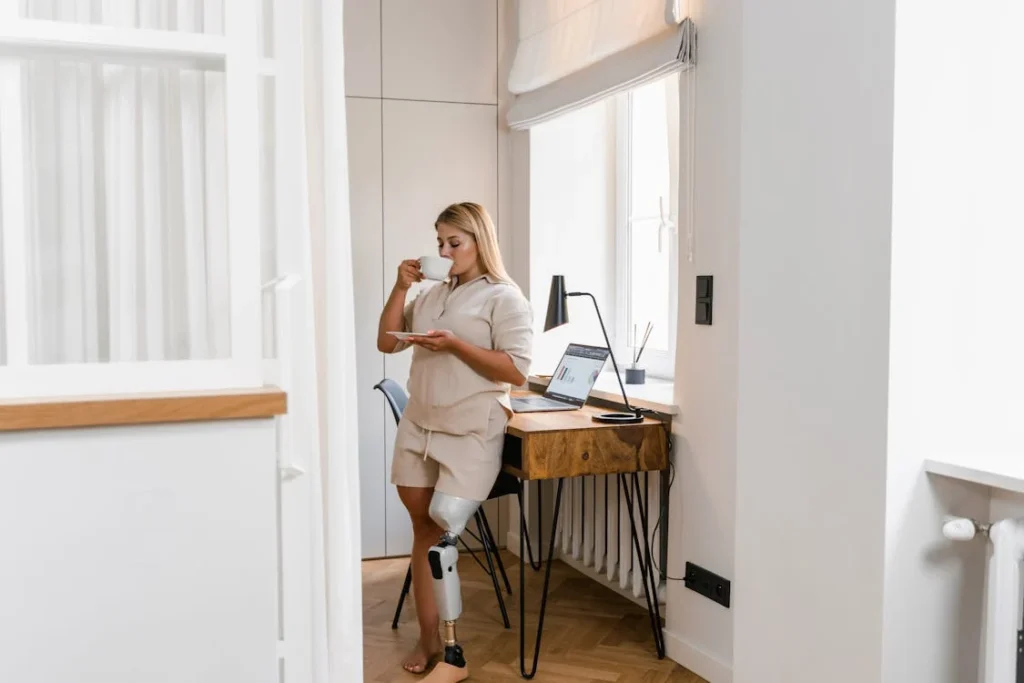
Conclusion
Fitment may seem like a technical detail, but it’s one of the most personal parts of the prosthetic experience. It influences how you walk, how you feel, how fast you move, and how much you can do in a day. It affects your physical energy, your mental strength, and your emotional well-being.
When the fit is right, the prosthetic limb stops being a device—and becomes a part of you.
If you or someone you care about is struggling with walking speed, low energy, or discomfort, don’t wait. The solution might be simpler than you think. Talk to a prosthetist. Revisit your socket. Explore new materials or adjustments. Even a small change could mean a big leap in how you live each day.
You deserve comfort. You deserve freedom. And with the right fit, you can have both.



